Eritrea Flag Meaning
A red triangle at the hoist with a golden olive branch and wreath, adjacent to green and blue triangular sections, representing the struggle for independence, agricultural potential, maritime heritage, and hopes for peace.
- Continent
- Africa
- Adopted
- 1995
- Ratio
- 1:2
- Colors
- green, blue, red, yellow
- Designer
- Unknown
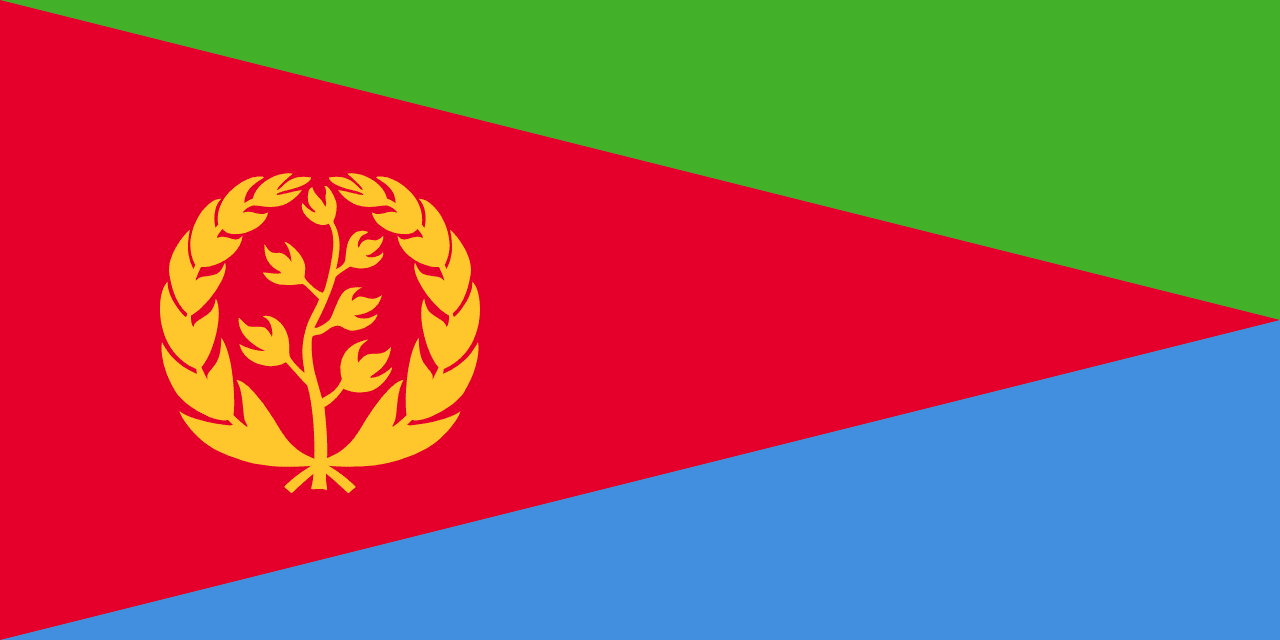
Symbolism
Red Triangle: Represents the blood shed during the 30-year struggle for independence from Ethiopia, symbolizing the sacrifice made by freedom fighters and martyrs who died for Eritrean sovereignty and self-determination.
Green Triangle: Represents the agricultural wealth and fertility of Eritrea's highlands, symbolizing the potential for agricultural development and the lush vegetation of the plateau regions that form the country's heartland.
Blue Triangle: Represents the Red Sea that borders Eritrea's coastline and the country's maritime resources, symbolizing the fishing industry, trade potential, and strategic location along important shipping routes.
Golden Olive Branch and Wreath: Represents peace and the aspiration for prosperity, symbolizing hope for stability after decades of war and the desire to build a peaceful, prosperous nation in the Horn of Africa.
History
- Ancient Times: The region was part of ancient civilizations including the Kingdom of Aksum, with cultural and trade connections across the Red Sea and deep into Africa, establishing Eritrea's position as a crossroads of civilizations.
- 1890-1941: Italian colonization established Eritrea as Italy's first African colony, with the name 'Eritrea' derived from the Roman name for the Red Sea, and significant infrastructure development including the famous Asmara-Massawa railway.
- 1941-1952: British administration governed Eritrea after defeating the Italians in World War II, with debates over Eritrea's future leading to international involvement and eventual federation with Ethiopia.
- 1952-1962: UN Resolution 390A federated Eritrea with Ethiopia under Emperor Haile Selassie, granting autonomy while allowing Ethiopian control over defense and foreign affairs, creating tensions that would lead to conflict.
- 1962-1991: Ethiopia annexed Eritrea, dissolving the federation and sparking a 30-year independence war led by the Eritrean People's Liberation Front (EPLF) against Ethiopian rule and occupation.
- May 24, 1991: Eritrean independence fighters liberated Asmara and established the Provisional Government of Eritrea, ending three decades of armed struggle and beginning the transition to independence.
- April 23-25, 1993: A UN-supervised referendum resulted in 99.8% support for independence, formally establishing Eritrea as a sovereign nation and leading to international recognition of independence.
- May 24, 1995: The National Assembly adopted the current flag design, representing the independent State of Eritrea and its aspirations for peace, development, and prosperity after decades of conflict.
- 1998-2018: Border conflicts with Ethiopia, authoritarian governance, and isolation characterized this period, with the flag representing a nation struggling with development challenges and human rights concerns.
- 2018-Present: Peace agreement with Ethiopia ended the 'no war, no peace' situation, with hopes for normalization and development, though governance and human rights issues remain challenges for the nation.
Trivia
- Eritrea is one of the world's youngest countries, having gained independence in 1993 after a 30-year liberation struggle against Ethiopian occupation.
- The flag represents a country with nine ethnic groups speaking nine different languages, making it one of Africa's most linguistically diverse nations.
- Asmara, the capital, is a UNESCO World Heritage Site known for its well-preserved Italian Art Deco and Modernist architecture from the colonial period.
- Eritrea has no elections scheduled and is considered one of the world's most repressive countries, with widespread conscription and limited political freedoms.
- The flag flies over a country that has one of the world's most militarized societies, with indefinite national service affecting most of the population.
- Eritrea's Red Sea coastline is over 1,000 kilometers long and includes the Dahlak Archipelago with pristine coral reefs and marine biodiversity.
- The country has significant mineral resources including gold, copper, and potash, though development has been limited by political and economic factors.
- Eritrea is one of the few countries in the world with no private media, with all newspapers, radio, and television controlled by the government.
- The flag represents a country where coffee ceremonies are central to social life, with elaborate rituals surrounding the preparation and consumption of coffee.
- Eritrea has produced world-class long-distance runners who compete internationally, continuing the Horn of Africa tradition of excellence in athletics.
- The Eritrean railway, built by the Italians in the 1930s, is considered an engineering marvel that climbs from sea level to over 2,400 meters in elevation.
- The flag flies over a country with significant archaeological sites, including ancient ports and religious centers that demonstrate its long history as a trading hub.
- Eritrea has maintained a state of 'no war, no peace' with Ethiopia until recently, creating a prolonged emergency situation that affected development and governance.
- The country's highlands have a temperate climate despite being in tropical Africa, with the capital Asmara enjoying mild weather year-round.
- Eritrea has one of the highest emigration rates in the world, with many citizens leaving due to economic hardship and political repression, creating a significant diaspora community.
Related Countries
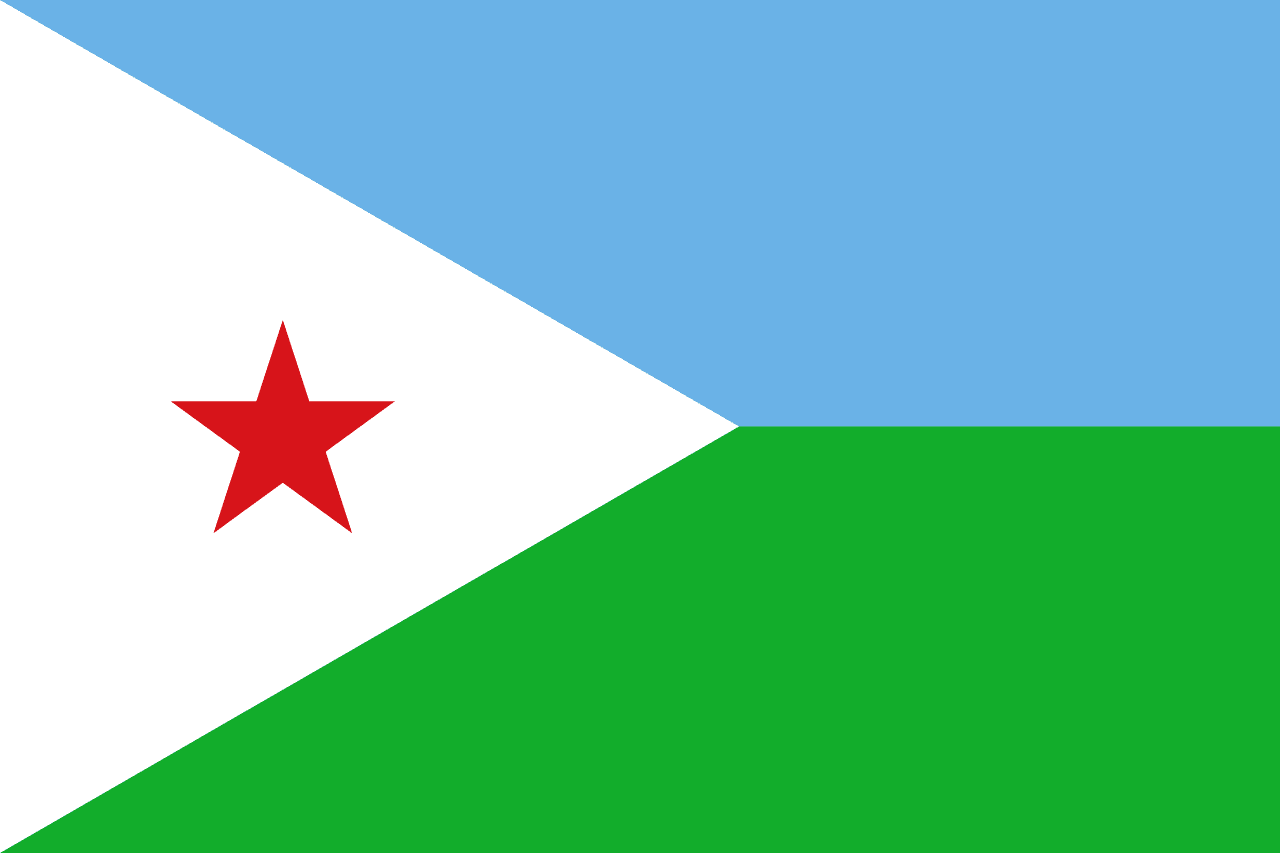
Djibouti
Africa
A light blue field with a white triangle at the hoist containing a red five-pointed star, and a green lower stripe, representing the sky and sea, the Issa people, peace, unity, and the Afar people of this strategic Horn of Africa nation.
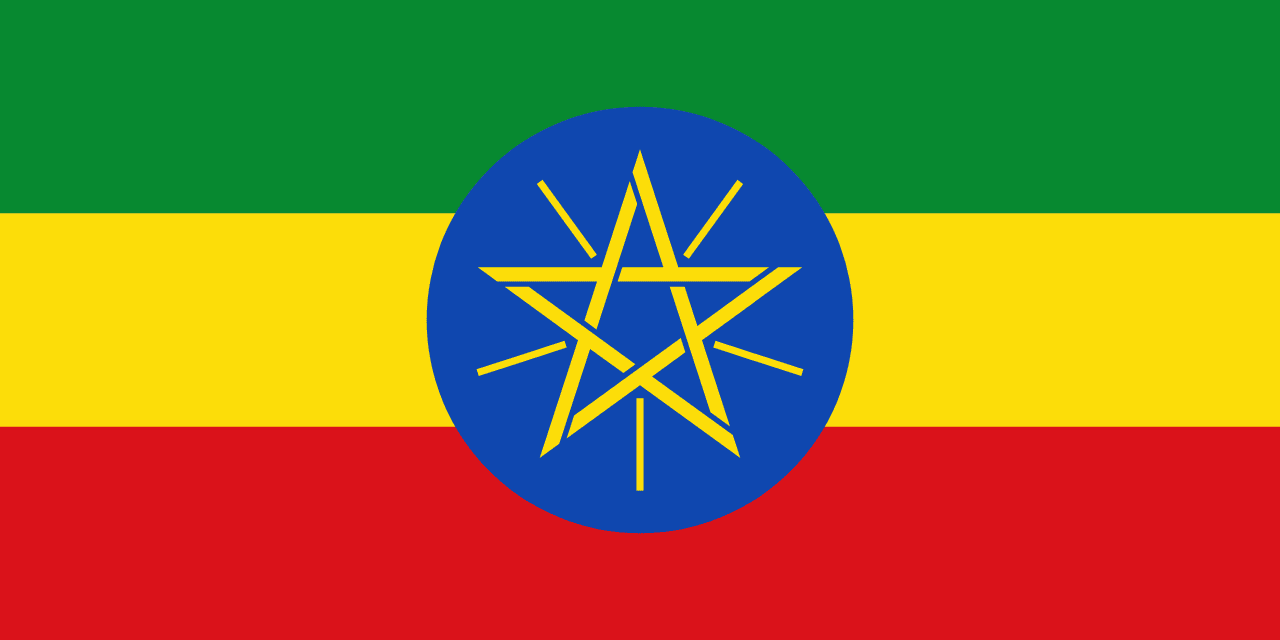
Ethiopia
Africa
Three horizontal stripes of green, yellow, and red with a blue circle containing a yellow five-pointed star in the center, representing the original Pan-African colors, the diversity and unity of Ethiopia's peoples, and the country's ancient independence.
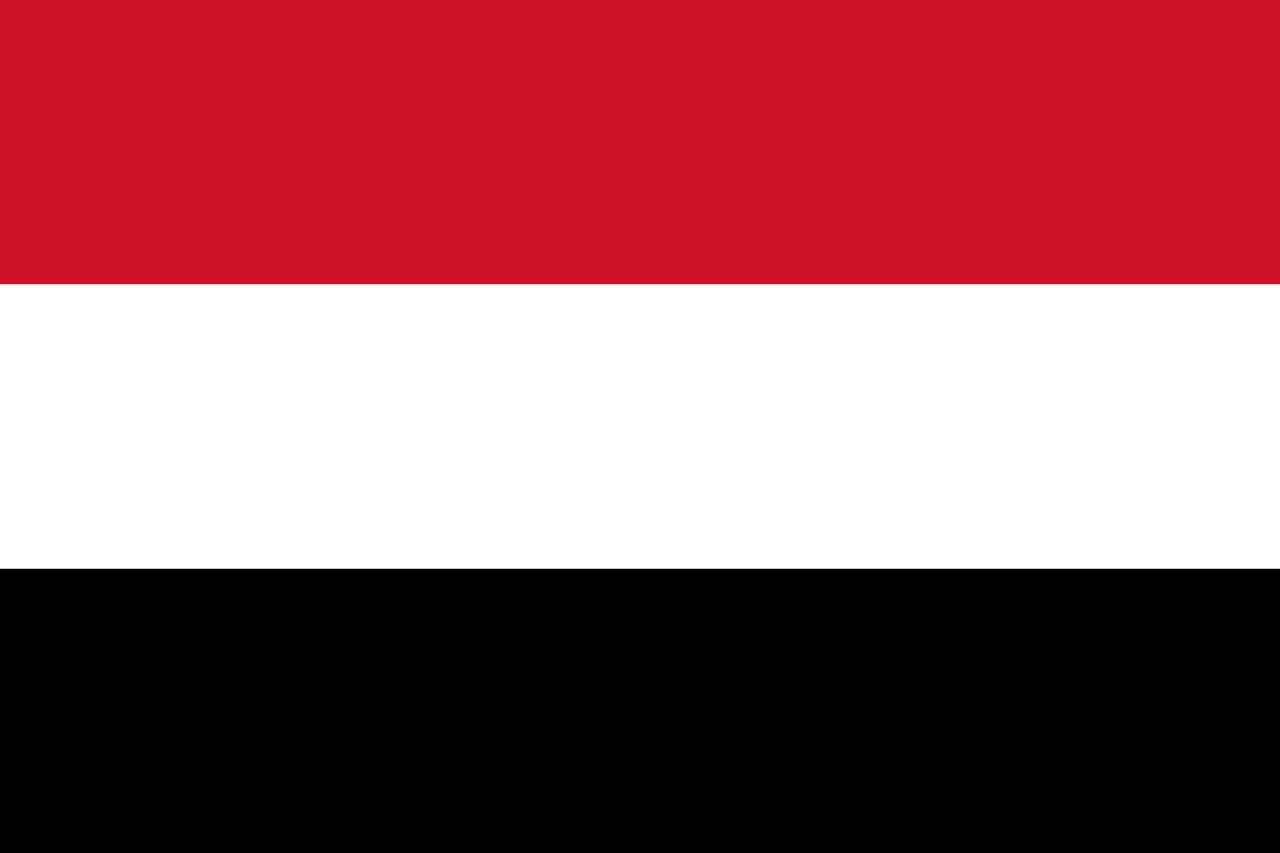
Yemen
Asia
Three horizontal stripes of red, white, and black representing the Pan-Arab colors that symbolize the bloodshed for freedom, bright future and peace, and the dark past of oppression, adopted when North and South Yemen unified into the Republic of Yemen.
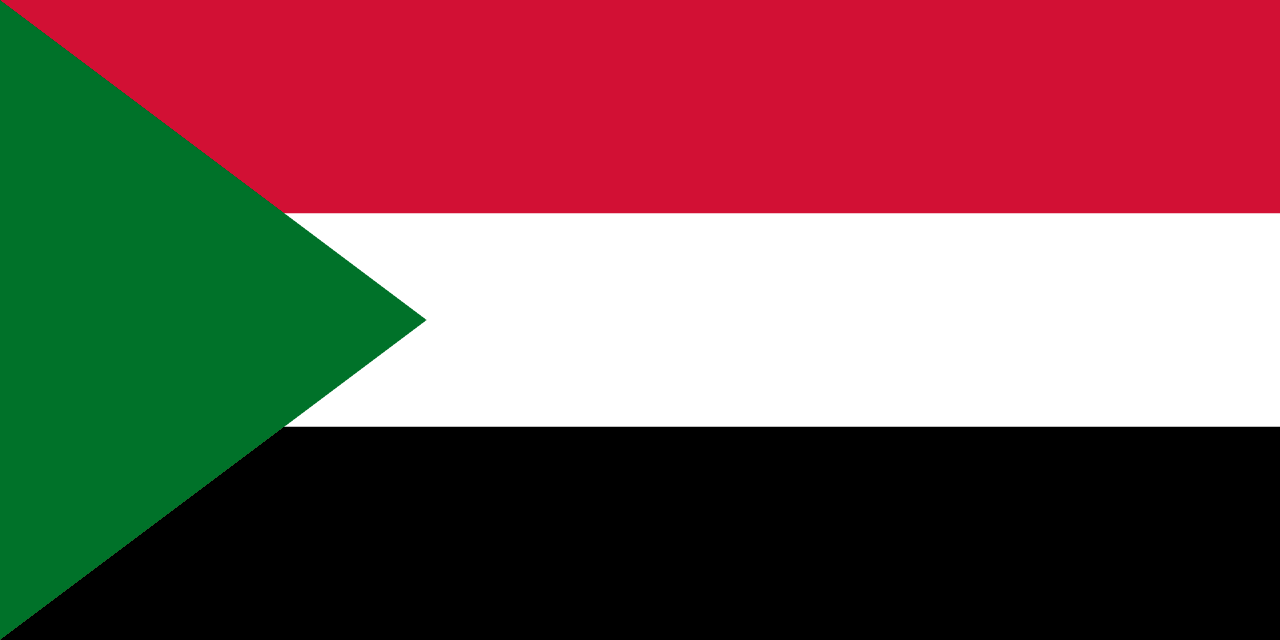
Sudan
Africa
Three horizontal stripes of red, white, and black with a green triangle at the hoist, representing the Pan-Arab colors of the struggle for independence, the blood shed for freedom, peace and light, the battles against oppression, and the prosperity and agriculture of Sudan.

Saudi Arabia
Asia
A green field with the Islamic declaration of faith (shahada) in white above a horizontal sword. The design emphasizes Islam as the foundation of the state.
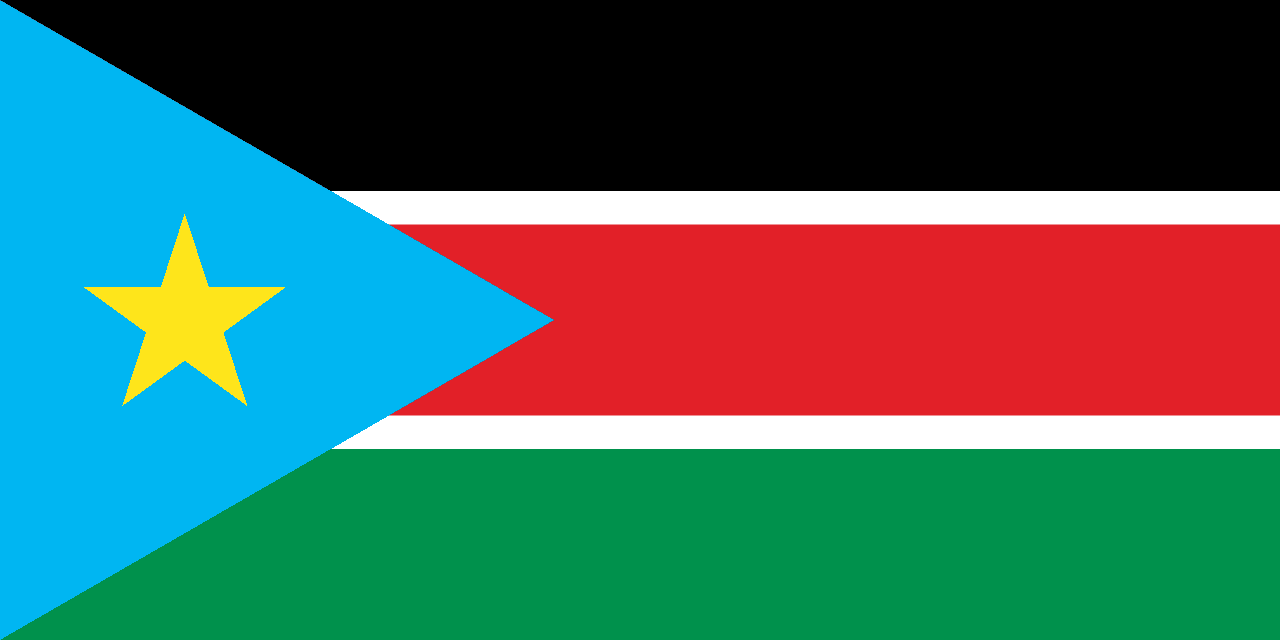
South Sudan
Africa
Three horizontal stripes of black, red, and white with a blue triangle at the hoist containing a yellow star, representing the African people, the blood shed for freedom, peace, the Nile River, and the unity of the states, designed for the world's newest country upon independence in 2011.